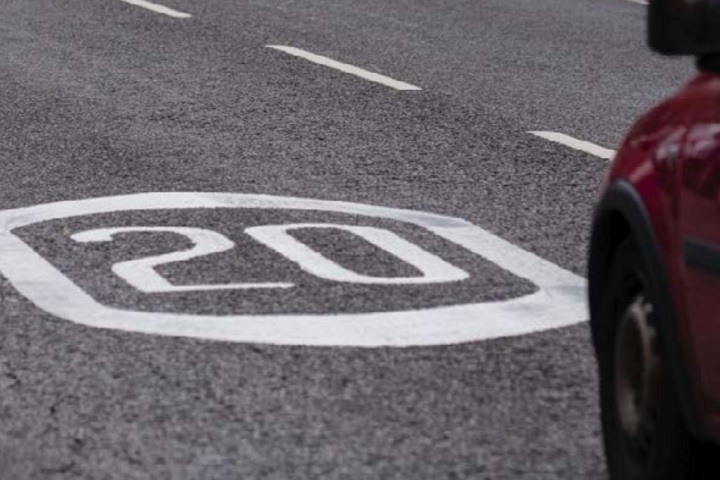
Image: Welsh Government
New data shows that the default 20mph speed limit in Wales has led to a 4mph reduction in speed.
The data, which was collected by Transport for Wales, monitored millions of vehicles’ speeds in nine different communities before and after implementation.
It shows the average speeds dropped an average of 4mph – from 28.9mph to 24.8mph.
The Welsh Government says that the data provides clear evidence that speeds are moving in the right direction.
Lee Waters, deputy minister for climate change, with responsibility for transport, said: “The latest data published today is clear evidence that average speeds are coming down on roads across Wales.
“We also know from data published by Go Safe earlier this month that 97% of drivers are complying with the new slower speed limit – behaviours and attitudes towards 20mph are beginning to change.
“We’ve still got a way to go, but it’s encouraging to see that things are moving in the right direction. Every 1mph reduction in speed makes a real difference – so this is a real turning point.
“The international evidence is clear, lower speeds saves lives – that’s fewer collisions, fewer deaths and fewer severe injuries, reducing the devastation to individuals and their families and the significant impact on the NHS and other emergency services.”
The data has been welcomed by Brake.
Ross Moorlock, chief executive of Brake, said: “It’s encouraging to see how the new 20mph speed limit has reduced the overall speeds of these roads.
“Every day, five people die on UK roads and speed is a factor in every crash. The faster we drive, the greater our risk of crashing, and the harder we hit if we do crash.
“We hope that governments and local authorities across the UK will take Wales’ lead and adopt 20mph as the default speed on roads where people and vehicles mix.”
Alongside publication of the national data, an initial report looking into the setting of exceptions to the default 20mph limit, has been published.
The report sets out a series of early findings and initial recommendations, including that greater consistency in the application of exceptions across Wales, taking into account the function, design and context of a road, would be helpful to all road users so that urban roads with 20mph and 30mph limits have consistent characteristics.
Cllr Andrew Morgan, chair of the Welsh Local Government Association, said: “Council leaders welcome the review of the implementation and the current guidance to help them make the right choices for their communities. Councils want to engage with the review to ensure we have the right speeds on the right streets.
“Whilst there appears to be some roads where the speed limit isn’t right and there is a need for local authority review, we have heard from some councils that positive differences have been seen in the speed and safety of their streets, particularly amongst vulnerable people.”
Some benefits of lower speeds can’t be measured e.g. less stress to residents and other vulnerable road users and less noise pollution. It’s not just about collisions.
Hugh Jones, Cheshire
--2
Whilst the overall speeds have reduced can the figures for the reduction in injury collisions be published.
“The international evidence is clear, lower speeds saves lives – that’s fewer collisions, fewer deaths and fewer severe injuries, reducing the devastation to individuals and their families and the significant impact on the NHS and other emergency services.”
This is a great comment but we need to see reduction in injury collisions before we can herald it as a success
Stephen Hughes
+4